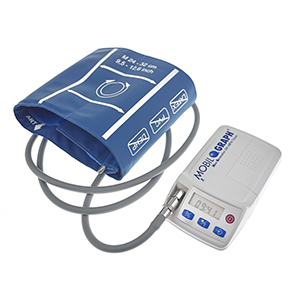
Acute Ischemic Stroke and tPA AHA/ASA 2013 Guideline Recommendation To limit the risk of ICH: Blood pressure should be lowered to <185/110 mmHg prior to fibrinolytic therapy with tPA Once tPA is given, the blood pressure must be maintained My rest blood pressure was 140/85 after two minutes on test blood pressure was taken while still walking and arm hanging down. Test was stopped because pressure was 200/110. I have taken pressure on my own treadmill and heart rate was 161 and showed 161/95 standing still, but showed 230/110 while still walking.Blood sugar was high, around 220. Blood pressure was a tad high, nothing crazy.
220 Blood Pressure Professional There Are
This is a potentially life-threating issue and you should call 911 immediately. Once you have been assessed by a medical professional there are a number of ways you can address a blood pressure reading of 220/120. 115116 Diastolic blood pressure, 244245 Diastolic heart failure. 58 Disposable gloves, 13, 14f Disproportionate dwarfism, 220 Dissection, 251. I have tested my son 25 yrs old his was 222/140 while walking, but only 150/85 while standing still while pressure was taken. Other friend, the same very high while walking but low while standing still.If while moving pressure reading is not correct, how can I do a stress test and they stop it if pressure reaches 200+? I cannot see how I can pass test.As this is having a great reaction to my job need some help as no one will explain.
Prehospital BP measurements should be considered reliable 1%-6% of all ED patients will present with severe hypertension, but less than half of those will have target organ damage Blood pressure is generally >180/120 (usually > 220/130), but presence of end-organ damage defines disease (not absolute blood pressure number)
CBC with peripheral smear- assess for microangiopathic hemolytic anemia Drug use or overdose (e.g stimulants, especially alcohol, cocaine, or Synthroid)Consider any of the following based on the patient's clinical presentation Sympathetic crashing acute pulmonary edema Respiratory failure from pulmonary edema Focus on ABCs (assess need for intubation or respiratory support)
CXR - evaluate for pulmonary edema or dissection Fundoscopic Exam - evaluate for hypertensive retinopathy or papilledema Ultrasound - evaluate for aortic dissection, bladder outlet obstruction, or depressed myocardial function Urinalysis - Assess renal failure, glomerulonephritis, preeclampsia
High blood pressure without symptoms is NOT hypertensive emergency (see asymptomatic hypertension) Must have evidence of end-organ dysfunction Most patients will show changes on MRI, although this is not necessarily indicated in the emergency department. Hypertensive encephalopathy is thought to be secondary to alteration in cerebral auto-regulation leading to posterior reversible encephalopathy syndrome (now called reversible posterior leukoencephalopathy).
Rapidly reduce sys BP to 100-120 HR 60-80 within 20min Used in patients at risk for cerebral hypotension, CHF0.1 - 0.3 mg PO q12 scheduled For hypertensive emergency, 0.2 mg x1, then 0.1 mg q1 hr PRN, max 0.6 mg totalΑ-2 agonist, BP effects within 30-60 min after PO doseReduced CNS sympathetic flow, decreasing SVR, HR, BP no renal blood flow changes tolerance/tachyphylaxis develop quickly10 - 20 mg slow IV/IM bolus q4-6 hr PRN, max 40 mg/dosePeripheral vasodilator, with fall in BP beginning within 30 min, lasting 2-4 hrsDecrease in DBP > SBP has increased HR, stroke volume and cardiac outpt preferential vasodilation > venodilation Be careful of lowering BP in patients with CVAIncrease by 0.5 mcg/kg/min up to 2mcg/kg/minDrug of choice in patients with cardiac ischemia,- if ineffective repeat load, increase infusion rate by 50mcg/kg/min up to 300mcg/kg/minIf ineffective after 15min increased in 2.5mg/hr interval up to 15mg/hrUsed for catecholamine-induced hypertensionBolus 1.25mg over 5min q6hr, titrate at 30min intervals to max of 5mg q6hrDecreases HR, SV, systemic arterial pressure1. Exception is aortic dissection which requires rapid reduction to systolic BP to 100-120 mmHg Then lower by an additional 5-15% over the next 23 hours for no more than 25% in the first 24 hours Goal: Lower mean arterial or systolic pressure by no more than 10-20% in the first hour
Patients receiving titratable antihypertensive therapies will likely require admission to critical care unit Phentolamine OR (nitroprusside AND β-blocker) Labetalol or Nicardipine are both effective and safe Phentolamine OR nitroprusside AND β-blocker No more than 20-30% reduction for SBP >160 Nitroprusside or nicardipine AFTER metoprolol or esmolol

Doi:10.1016/j.pcad.2006.02. Clinical features in the management of selected hypertensive emergencies.


 0 kommentar(er)
0 kommentar(er)
